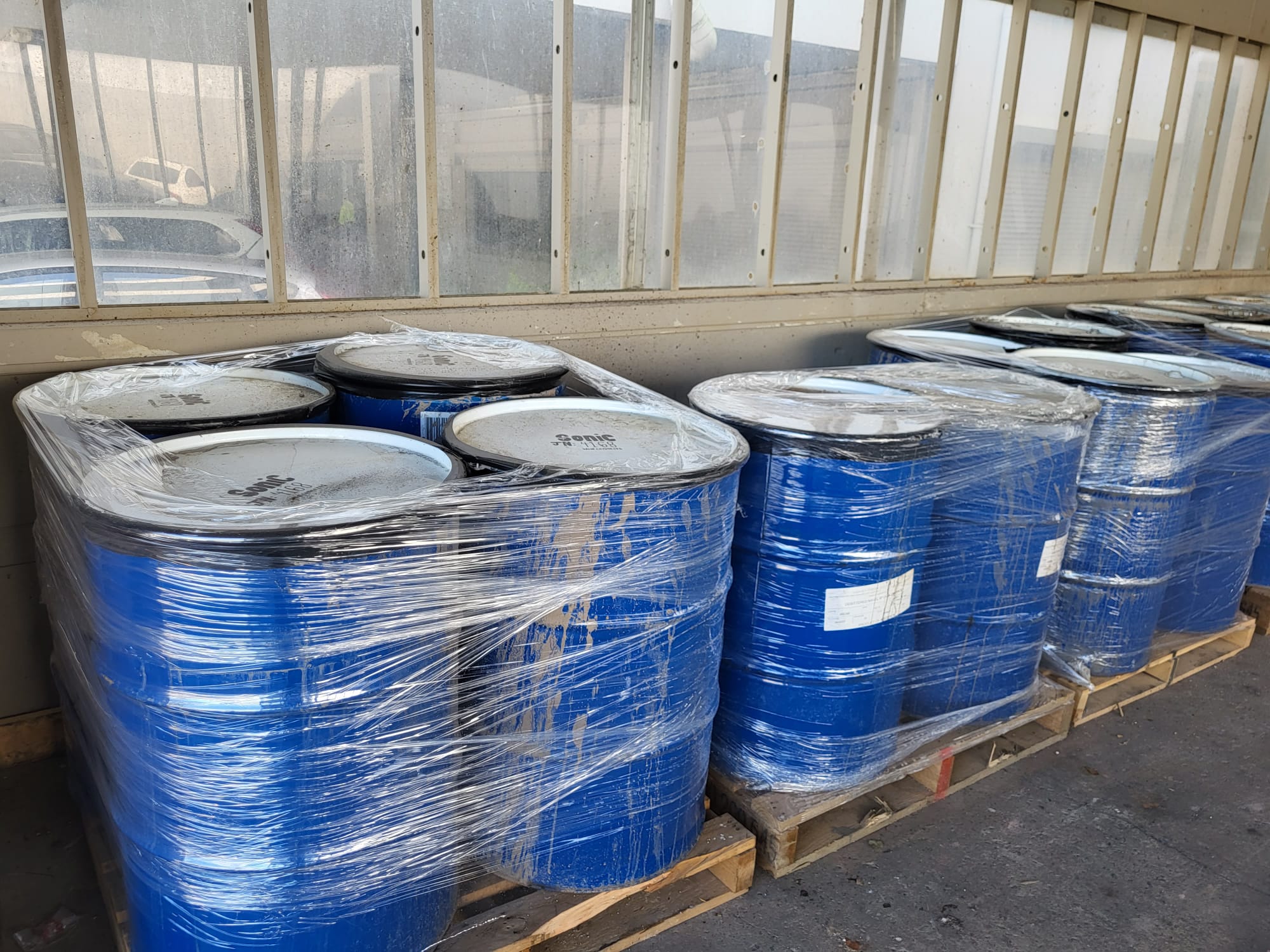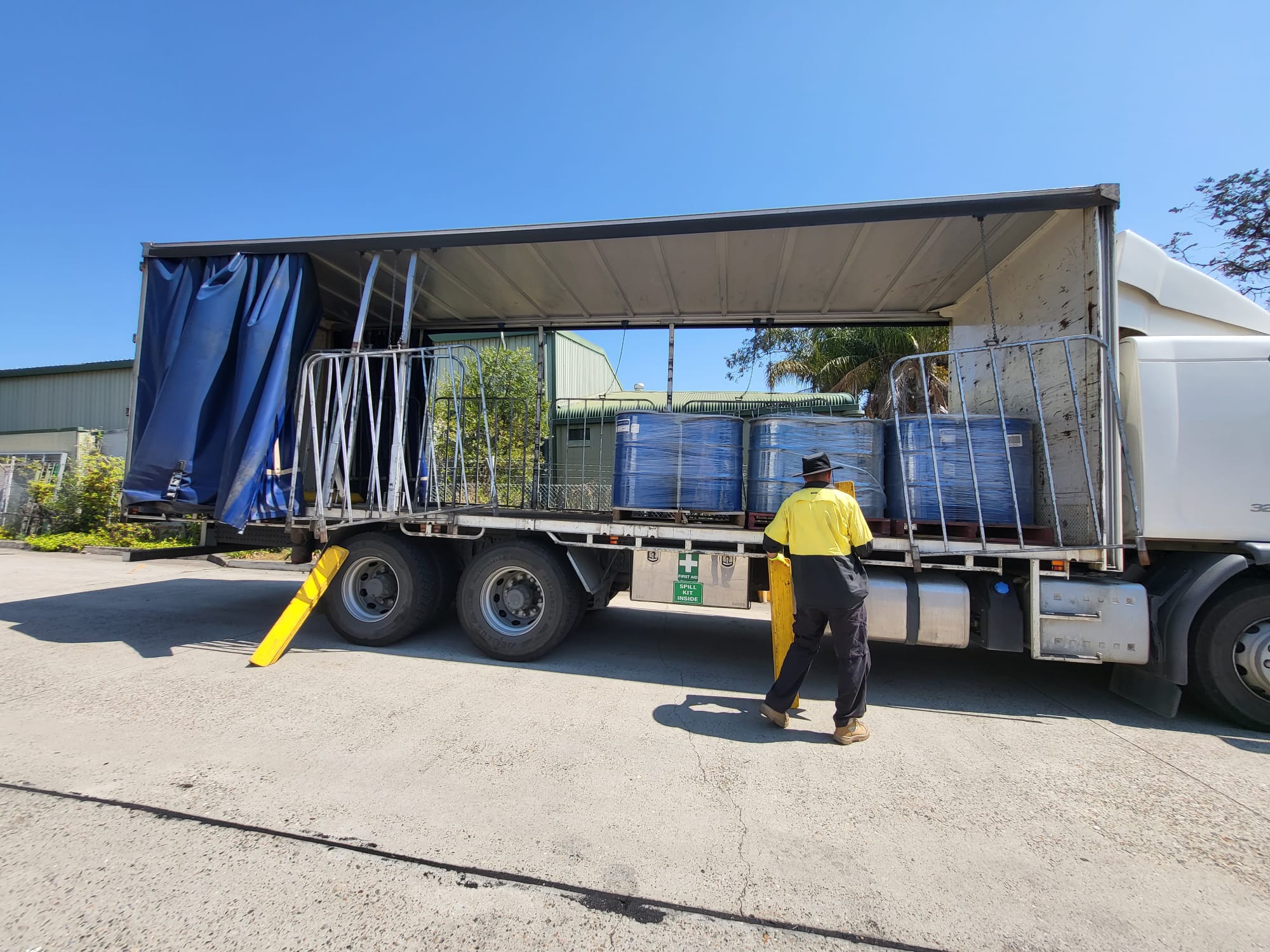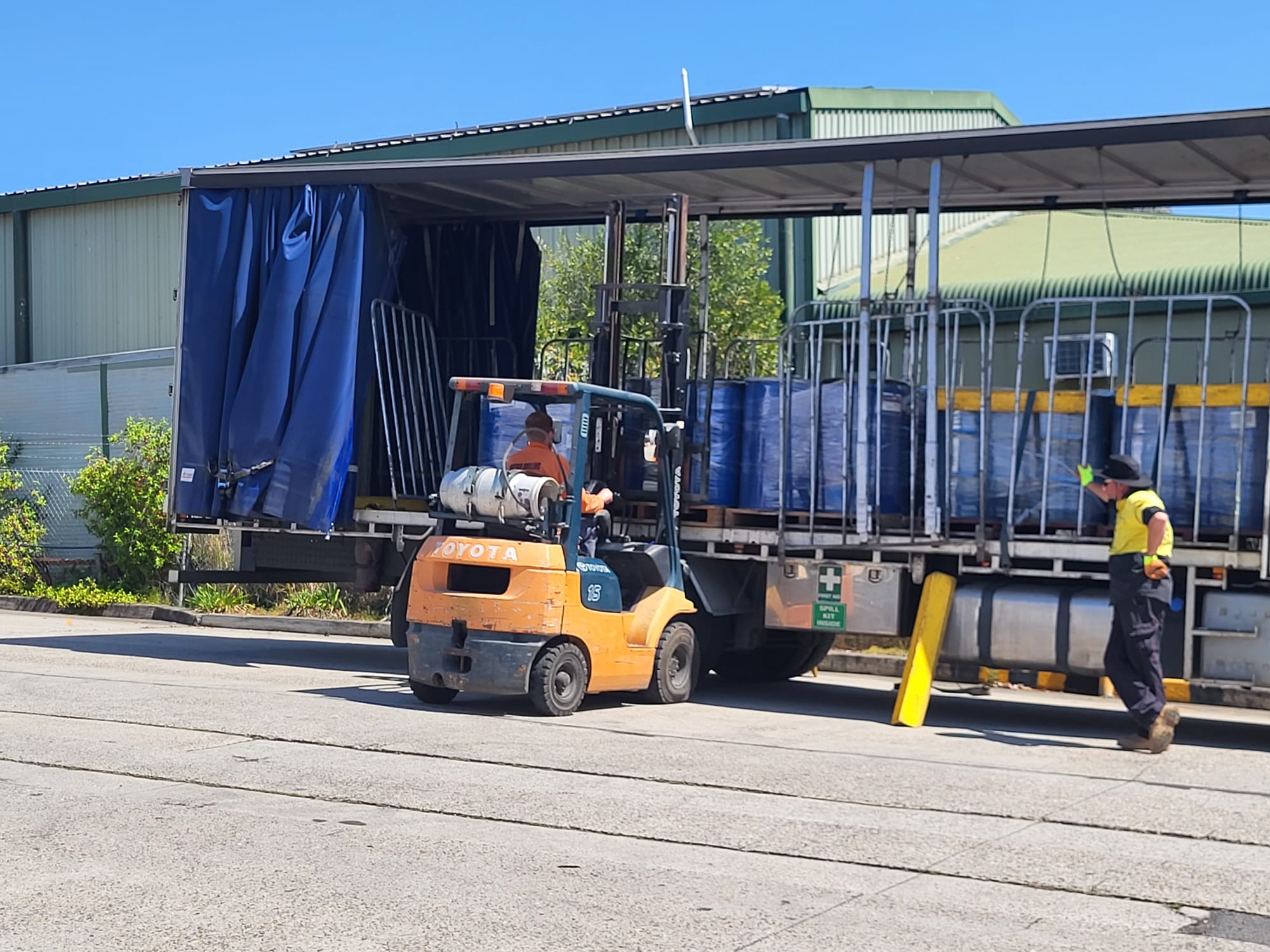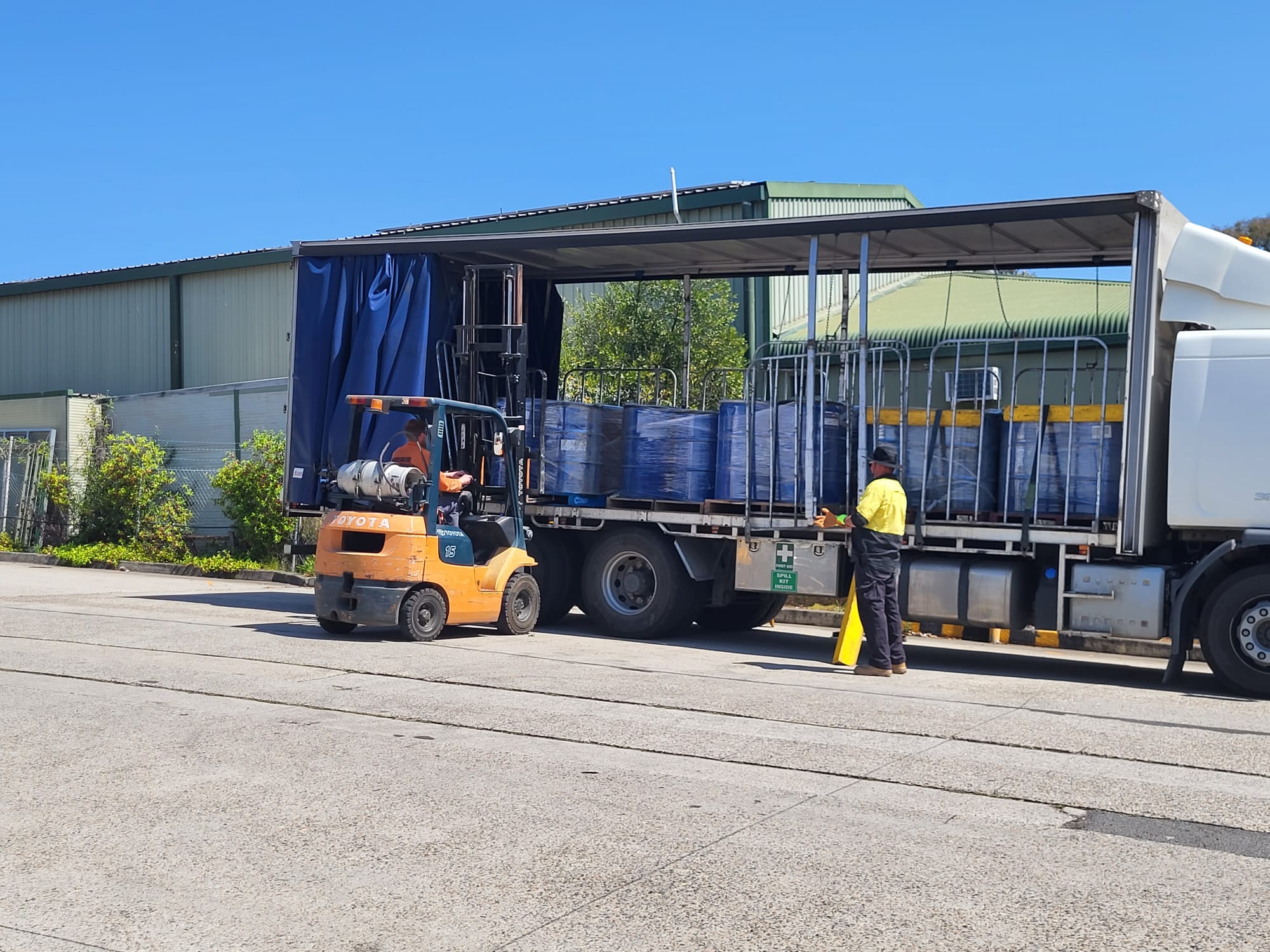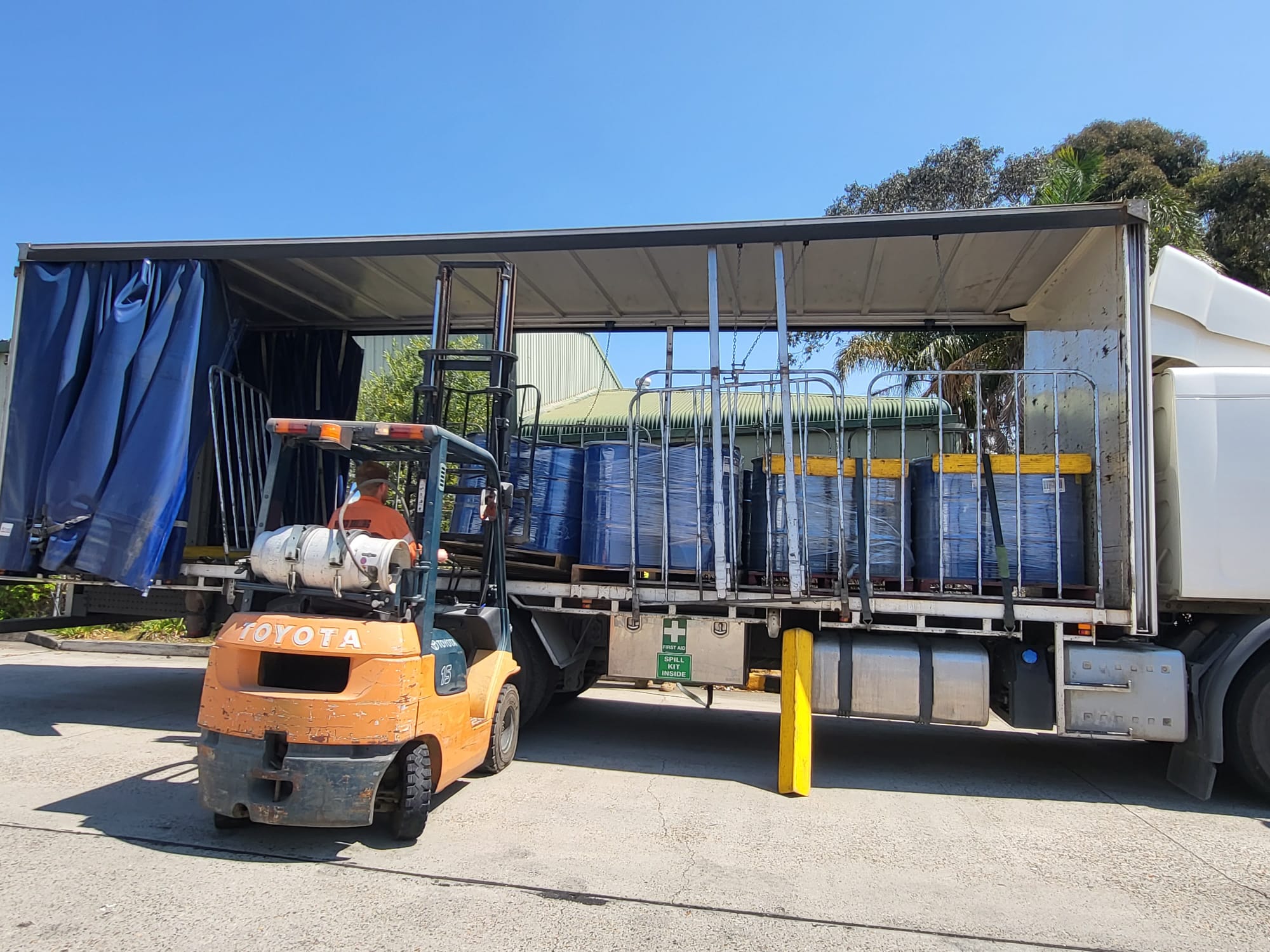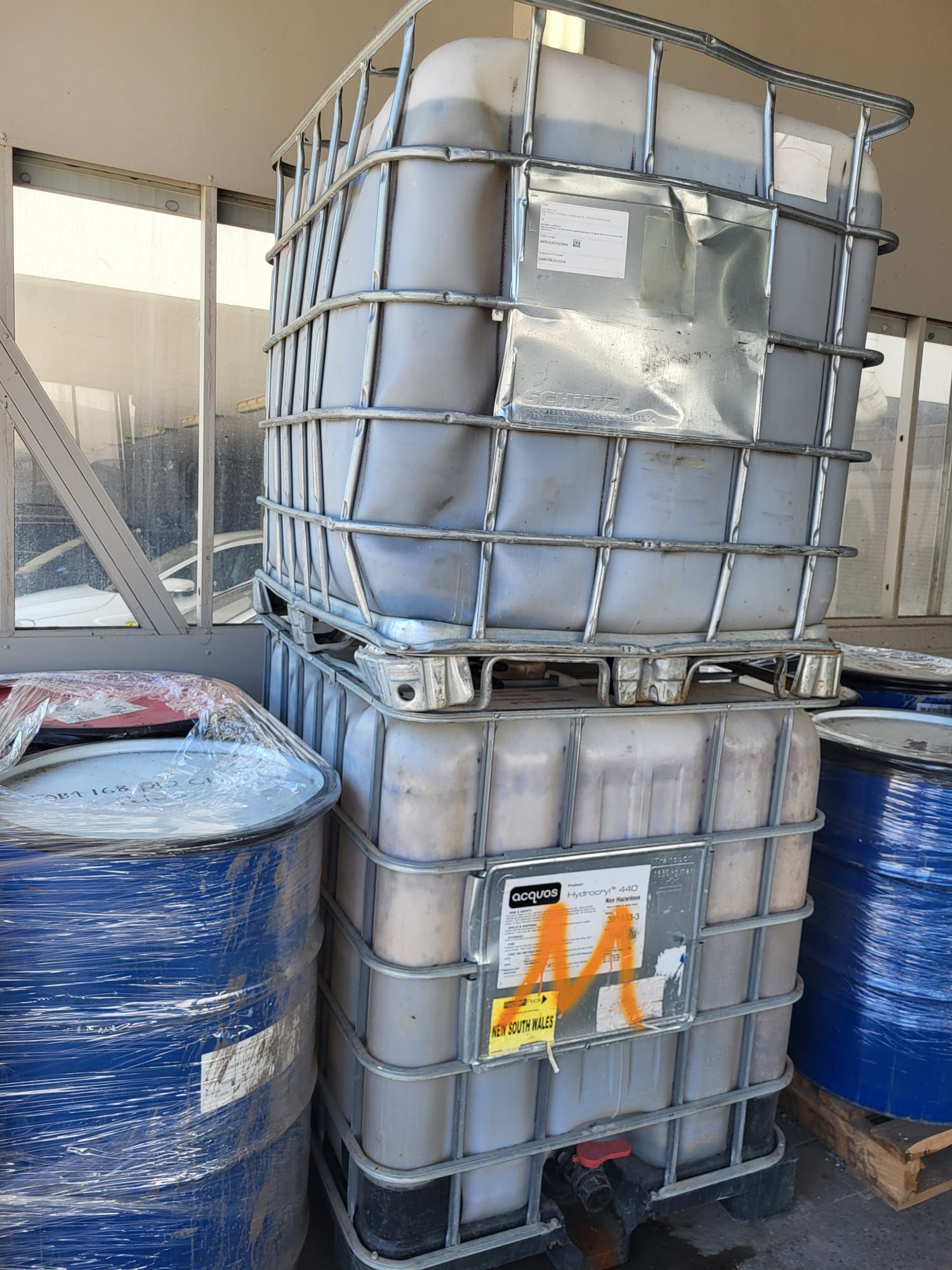Hazardous chemical disposal involves the safe and proper handling and removal of dangerous substances to prevent harm to people and the environment. Improper disposal can have severe consequences, including contamination of water sources and air pollution.
It is important to rely on certified professionals and follow regulatory guidelines to ensure the safe disposal of hazardous chemicals.
Understanding The Risks Associated With Improper Disposal
Proper disposal of hazardous chemicals is crucial to ensure the safety of our environment, as well as our own health. Improper disposal can lead to severe consequences, ranging from environmental pollution and health hazards to legal repercussions. It is important to have a clear understanding of the risks associated with improper disposal in order to make informed decisions regarding the management and disposal of hazardous chemicals.
Get Quick Quote & Waste Audit Contact us under no obligation.
Environmental Impact
The improper disposal of hazardous chemicals can have devastating effects on the environment. When these chemicals are disposed of inappropriately, they can leach into soil and contaminate groundwater, causing long-term damage to ecosystems. Additionally, they can find their way into rivers, lakes, and oceans, leading to water pollution and endangering aquatic life. The release of hazardous chemicals into the atmosphere can contribute to air pollution and negatively impact air quality.
Health Hazards
Improper disposal of hazardous chemicals poses serious health risks to both humans and animals. Exposure to these chemicals can result in immediate and long-term health effects. Short-term exposure can cause respiratory problems, skin irritation, and eye damage, while long-term exposure can lead to chronic diseases, such as cancer, neurological disorders, and reproductive issues. Furthermore, improper disposal practices can contaminate food sources, increasing the risk of ingestion and further health complications.
Legal Consequences
Engaging in improper disposal of hazardous chemicals can result in significant legal consequences. Many countries have strict regulations and guidelines in place to govern the proper handling and disposal of hazardous substances. Failure to adhere to these regulations can lead to fines, penalties, and even legal action. It is essential for individuals and organizations to be aware of and comply with the legal requirements surrounding hazardous chemical disposal, not only to avoid potential legal consequences but also to contribute to a safer and cleaner environment.
Images Of Our Hazardous Chemical Disposal Services:
Here are some images of our Hazardous Chemical Disposal services in NSW. We offer the services both in NSW & ACT, Australia.
Safe Handling And Storage Of Hazardous Chemicals
The safe handling and storage of hazardous chemicals is essential to protect both people and the environment. In order to minimize the risks associated with these substances, it is crucial to follow proper protocols and guidelines. This article will outline the necessary steps for safe chemical handling, focusing on labeling and container requirements, proper storage practices, and handling precautions.
Labeling And Container Requirements
Proper labeling of hazardous chemical containers is crucial to ensure that everyone working with these substances can easily identify and understand their potential dangers. According to regulatory guidelines, each container must be clearly labeled with the chemical name, hazards, and any necessary safety precautions. Additionally, containers should be leak-proof and durable, to prevent any accidental spills or leaks. It is important to regularly inspect containers for any signs of damage or deterioration and replace them as needed.
Proper Storage Practices
When it comes to storing hazardous chemicals, certain precautions must be taken to minimize the risk of accidents and chemical reactions. Firstly, chemicals should be stored in a well-ventilated area, away from direct sunlight and extreme temperatures. Organizing chemicals based on their compatibility can also help reduce the likelihood of accidental mixtures. Flammable and combustible chemicals should be stored in appropriate fire-resistant cabinets, while corrosive substances should be kept separate from reactive materials.
| Chemical Type | Storage Recommendations |
|---|---|
| Flammable | Store in fire-resistant cabinets away from ignition sources. |
| Corrosive | Keep separate from reactive materials. Store in well-ventilated areas. |
| Toxic/Poisonous | Store in secure containers in a designated area. |
Handling Precautions
When it comes to handling hazardous chemicals, workers must take appropriate precautions to protect themselves and others. Personal protective equipment (PPE) should always be worn, including gloves, goggles, and chemical-resistant clothing. It is important to avoid direct contact with the skin or eyes, and to wash hands thoroughly after handling chemicals. In the event of a spill or accident, there should be an emergency response plan in place and workers should be trained on how to properly clean up and dispose of hazardous materials.
- Always wear appropriate personal protective equipment (PPE).
- Avoid direct contact with chemicals and wash hands thoroughly after handling.
- Follow an emergency response plan in the event of a spill or accident.
- Properly clean up and dispose of hazardous materials.
Regulations And Compliance For Hazardous Chemical Disposal
When it comes to hazardous chemical disposal, adhering to the relevant regulations and compliance guidelines is of utmost importance. Proper disposal is crucial to protect the environment and prevent any potential harm to human health. In this section, we will discuss an overview of the relevant regulations, compliance guidelines for businesses and individuals, and the penalties for non-compliance.
Compliance Guidelines For Businesses And Individuals
Businesses and individuals must follow specific compliance guidelines to ensure the safe and proper disposal of hazardous chemicals. Here are some essential guidelines to consider:
- Identify and classify hazardous chemicals accurately
- Label containers properly with relevant information
- Store hazardous chemicals in appropriate containers and areas
- Maintain an inventory of hazardous chemicals
- Provide adequate training to employees regarding handling and disposal procedures
- Follow proper transportation procedures when moving hazardous chemicals
- Utilize authorized disposal facilities or services
Penalties For Non-compliance
Non-compliance with hazardous chemical disposal regulations can result in severe penalties for businesses and individuals. Some of the possible penalties include:
- Warnings and fines
- Revocation of permits or licenses
- Legal actions, including lawsuits and injunctions
- Criminal charges with potential imprisonment
It is crucial for businesses and individuals to understand and comply with these regulations to avoid potential penalties and contribute to a safer environment.
Get Quick Quote & Waste Audit Contact us under no obligation.
Effective Methods For Hazardous Chemical Disposal
Proper disposal of hazardous chemicals is crucial to protect the environment and prevent harm to human health. Thankfully, there are various effective methods available for handling and getting rid of these hazardous substances. In this article, we will explore three common methods for hazardous chemical disposal: recycling, treatment and neutralization, and incineration and landfilling.
Recycling
Recycling is a widely recognized method for hazardous chemical disposal. It involves the collection and processing of used chemicals to convert them into new products or extract valuable components. Recycling helps reduce waste and conserve resources, making it an environmentally-friendly option.
When it comes to hazardous chemicals, recycling can be a complex process. Some chemicals can be directly recycled, while others require special treatment before they can be safely reused. Recycling facilities follow strict regulations and guidelines to ensure the proper handling and disposal of hazardous materials.
Treatment And Neutralization
Treatment and neutralization is another effective method used for hazardous chemical disposal. This method involves subjecting the chemicals to various physical, chemical, or biological processes to render them less harmful or inert.
The treatment process may involve chemical reactions, such as oxidation or reduction, to break down the hazardous substances into less toxic forms. Neutralization, on the other hand, involves adding chemicals to adjust the pH level of the hazardous chemicals to a safe and non-reactive state.
Treatment and neutralization methods are versatile and can handle a wide range of hazardous chemicals. They help minimize the environmental impact and reduce the potential for accidents during transportation or storage.
Incineration And Landfilling
Incineration and landfilling are commonly used methods for the disposal of hazardous chemicals that cannot be recycled or treated. Incineration involves burning the chemicals at high temperatures to convert them into ash and gases, while landfilling involves burying the chemicals in designated landfills.
These methods are effective in destroying or isolating hazardous substances, preventing their release into the environment. However, they require proper monitoring and control to ensure that the emissions or leachate do not pose additional risks to the surroundings.
It's important to note that incineration and landfilling should only be considered as a last resort when all other methods are not feasible or suitable.
Best Practices For Hazardous Chemical Disposal In Various Industries
Proper hazardous chemical disposal is of utmost importance in various industries to ensure the safety of workers, protect the environment, and comply with regulatory standards. Implementing best practices in managing and disposing of hazardous chemicals is crucial for businesses across sectors. In this blog post, we will explore the best practices for hazardous chemical disposal in medical and healthcare facilities, laboratories and research institutions, and manufacturing and industrial sectors.
Medical And Healthcare Facilities
Medical and healthcare facilities generate a significant amount of hazardous waste that requires careful handling and disposal. Following best practices is essential to minimize risks and maintain a safe working environment for staff and patients. Some key considerations for hazardous chemical disposal in medical and healthcare facilities include:
- Proper segregation and labeling of hazardous waste containers, ensuring clear identification and prevention of cross-contamination.
- Regular training programs to educate personnel on the safe handling, storage, and disposal of hazardous chemicals.
- Establishing a waste management plan that includes procedures for waste generation, collection, and disposal.
- Working with a licensed hazardous waste disposal company to ensure compliance with local and national regulations.
- Maintaining accurate records of hazardous waste disposal, including manifests and tracking documentation.
Laboratories And Research Institutions
Laboratories and research institutions are workplaces with a high potential for hazardous chemical exposure. Adhering to best practices for hazardous chemical disposal is crucial in these settings to protect researchers, prevent environmental contamination, and comply with safety regulations. Some key best practices include:
- Performing a thorough risk assessment to identify the types and quantities of hazardous chemicals present in the laboratory.
- Implementing proper storage and labeling systems, including using color-coded labels and applying hazard symbols.
- Using appropriate personal protective equipment (PPE) when handling hazardous chemicals during disposal.
- Regularly inspecting and maintaining safety equipment, such as fume hoods and chemical spill kits.
- Establishing clear procedures for waste segregation, including separate containers for different types of hazardous waste.
- Ensuring regular training and education for laboratory staff on safe disposal practices and emergency response protocols.
Manufacturing And Industrial Sectors
The manufacturing and industrial sectors often deal with a wide range of hazardous chemicals, making proper disposal practices essential to mitigate potential risks. By implementing best practices, businesses can protect workers, prevent pollution, and maintain compliance with environmental regulations. Some key best practices for hazardous chemical disposal in these industries include:
- Conducting regular inspections and audits to identify and address hazardous waste generation points.
- Implementing a waste minimization program to reduce chemical wastage and optimize resource usage.
- Using appropriate containment systems, such as secondary spill containment, to prevent accidental releases.
- Ensuring adequate ventilation and exhaust systems are in place to minimize chemical exposure.
- Employing trained personnel to handle, transport, and dispose of hazardous chemicals safely.
- Regularly reviewing and updating disposal procedures to incorporate newer, safer techniques.
By following these best practices, medical and healthcare facilities, laboratories and research institutions, and manufacturing and industrial sectors can effectively manage the disposal of hazardous chemicals, minimizing risks to personnel, the environment, and public health.
Hazardous Chemical Disposal: Step-by-step Guide
Properly disposing of hazardous chemicals is crucial for safety and environmental protection. This step-by-step guide provides clear instructions to ensure safe disposal of hazardous chemicals.
Identifying Hazardous Chemicals
Before embarking on the hazardous chemical disposal process, it is crucial to correctly identify the substances you are dealing with. Identifying hazardous chemicals ensures that you take the appropriate measures for safe disposal and prevents any potential harm to yourself, others, or the environment.
Start by checking the labels and packaging of the chemicals. Look for warning signs such as hazard symbols or precautionary statements indicating the dangers associated with the substances. This information will help you determine the level of risk posed by each chemical.
If the labels are missing or unclear, rely on the Material Safety Data Sheet (MSDS) provided by the manufacturer. The MSDS contains detailed information about the physical and chemical properties, potential hazards, and proper disposal methods. Use this document to confirm the hazardous nature of the chemicals in your possession.
Keep in mind that hazardous chemicals can take various forms, from liquids and gases to solids and powders. Proper identification is key to ensuring that you handle and dispose of each substance correctly.
Preparing For Disposal
Once you have identified the hazardous chemicals, it is essential to take the necessary precautions to prepare for their safe disposal. By following these steps, you can minimize the risk of accidents and ensure that the process runs smoothly.
1. Secure the area: Designate a well-ventilated, isolated space specifically for the disposal process. Restrict access to authorized personnel only and ensure that appropriate safety measures, such as spill control kits and personal protective equipment, are readily available. This will help contain any potential leaks or spills during disposal.
2. Separate incompatible chemicals: Group the identified hazardous chemicals according to their compatibility. Keep substances that react with each other separate, as mixing them can result in dangerous reactions. Consult the MSDS or seek professional advice if you are unsure about any chemical combinations.
3. Package the chemicals securely: Transfer the hazardous chemicals into appropriate containers that are resistant to their corrosive, flammable, or toxic properties. Make sure the containers are tightly sealed to prevent leaks or spills during transport or storage. Additionally, clearly label each container with the chemical name and any necessary hazard warnings.
4. Educate personnel: Train and educate all the individuals involved in the disposal process about the hazards associated with the chemicals. Ensure that they understand the safety protocols, emergency procedures, and the importance of following the disposal guidelines meticulously. This will help minimize the risk of accidents and promote a safe working environment.
Contacting Professional Disposal Services
While you may have taken precautions and prepared for disposal, handling hazardous chemicals can still be dangerous. To further mitigate risks and ensure proper disposal, it is advisable to contact professional disposal services. These experts have the knowledge, experience, and equipment to manage hazardous waste safely and responsibly.
1. Research and select reputable disposal services: Begin by researching local disposal services that specialize in hazardous waste management. Look for reputable companies with proper certifications and licenses, and ensure they adhere to strict environmental regulations. Reading reviews or seeking recommendations from others in your industry can also help you make an informed choice.
2. Contact the chosen disposal service: Reach out to the selected disposal service provider and provide them with detailed information about the hazardous chemicals you need to dispose of. This will allow them to evaluate the level of risk involved and provide you with appropriate guidance on handling and transporting the chemicals.
3. Arrange for collection or drop-off: Work with the disposal service to arrange for the collection or drop-off of the hazardous chemicals. Be prepared to provide them with the necessary documentation, such as the MSDS or any other relevant paperwork, to facilitate the process.
4. Follow the instructions provided: Listen carefully to the instructions given by the disposal service and follow them meticulously. These instructions may include specific packaging requirements, transportation guidelines, or any additional information to ensure the safe disposal of the hazardous chemicals.
By entrusting the disposal process to professional services, you can have peace of mind knowing that the hazardous chemicals will be handled and disposed of in a manner that is compliant with regulations and prioritizes the safety of all involved.
Resources And Tools For Proper Hazardous Chemical Disposal
Properly dispose of hazardous chemicals with our comprehensive collection of resources and tools. Safely handle and eliminate harmful substances to protect the environment and ensure compliance with regulations.
Resources and Tools for Proper Hazardous Chemical Disposal Proper disposal of hazardous chemicals is crucial for the environment and human health. Thankfully, there are various resources and tools available to assist you in safely disposing of these substances. Whether you're an individual looking to dispose of household chemicals or a business seeking proper disposal methods for industrial chemicals, there are options to suit your needs. In this blog post, we'll explore some of the resources and tools you can utilize for proper hazardous chemical disposal.
Local Disposal Facilities And Services
When it comes to hazardous chemical disposal, one of the most practical options is to utilize local disposal facilities and services. These facilities are equipped to handle different types of hazardous waste and ensure it is disposed of safely and in accordance with environmental regulations. They often accept both household and industrial chemicals, making it a convenient choice for individuals and businesses alike. Additionally, local disposal services are usually run by experts who have the necessary knowledge and experience in handling hazardous chemicals. They can guide you on how to properly package and transport the chemicals to the facility, ensuring safety throughout the process. To find a local disposal facility near you, simply search online for "hazardous waste disposal facility + [your location]".
Frequently Asked Questions Of Hazardous Chemical Disposal
What Is The Proper Disposal Of Hazardous Chemical?
To dispose of hazardous chemicals properly, follow these steps: 1. Check local regulations. 2. Use appropriate containers labeled with hazard symbols. 3. Transport chemicals safely. 4. Contact a licensed waste disposal facility. 5. Do not pour chemicals down drains or into the trash.
How Hazardous Chemicals Should Be Stored And Disposed?
Hazardous chemicals should be stored and disposed of following these guidelines: 1) Keep them in appropriate containers and label correctly. 2) Store in a well-ventilated area away from heat and direct sunlight. 3) Handle with protective gear and avoid contact with skin or eyes. 4) Dispose of through authorized methods, such as recycling or hazardous waste facilities. 5) Educate and train staff on proper storage and disposal procedures.
What Are Examples Of Hazardous-waste Chemicals?
Examples of hazardous-waste chemicals include lead, mercury, asbestos, arsenic, and polychlorinated biphenyls (PCBs). These substances pose significant risks to humans and the environment due to their toxic nature. Proper handling and disposal are crucial to prevent harm.
How Do You Dispose Of Hazardous Chemicals Properly?
To dispose of hazardous chemicals properly, follow these steps:
1. Identify the chemical and its hazards. 2. Use appropriate containers for storage and disposal. 3. Contact your local waste management facility for instructions. 4. Follow all regulations and guidelines for disposal. 5. Never pour chemicals down the drain or dispose of them in the regular trash.
Video On Our Hazards Chemical Disposal Services In NSW, Australia:
Conclusion
Proper hazardous chemical disposal is crucial in maintaining a safe and healthy environment. By following the necessary guidelines and procedures, we can prevent contamination of our surroundings and safeguard human and animal health. Remember to educate yourself about the proper methods of disposal and to always prioritize safety.
Together, let's take responsibility for our waste and protect the world we live in.



